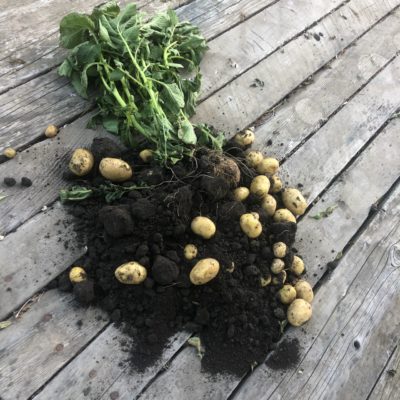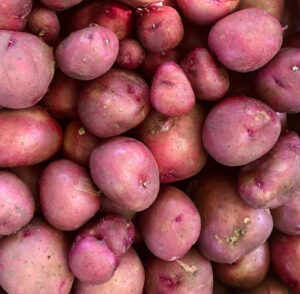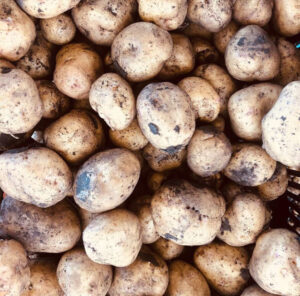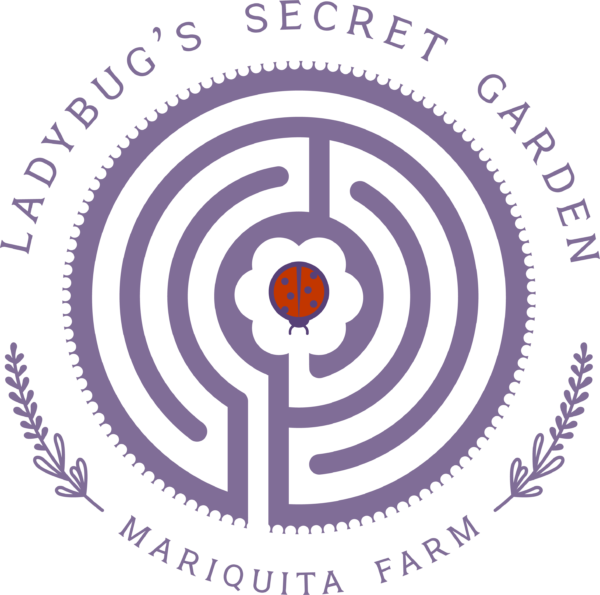Brand New Potatoes!

 high, and when they start to bloom we know that they are setting a new crop of potato tubers underground. Red skinned potatoes make rose colored flowers. Yellow and white potatoes have white blossoms, and purple potatoes have purple flowers. If these flowers get pollinated they will eventually form small, hard green fruits full of seed that resemble their tomato cousins, but we don’t worry about them. Instead, we wait for the potato plants to turn yellow, then wilt, and “die back.”
high, and when they start to bloom we know that they are setting a new crop of potato tubers underground. Red skinned potatoes make rose colored flowers. Yellow and white potatoes have white blossoms, and purple potatoes have purple flowers. If these flowers get pollinated they will eventually form small, hard green fruits full of seed that resemble their tomato cousins, but we don’t worry about them. Instead, we wait for the potato plants to turn yellow, then wilt, and “die back.” them to the pigs, but I save them. I like to make an early, thick planting of these cull potatoes that are too ugly to sell. When I see this crop flower I know there is a swarm of tiny potatoes growing underground. Once the young potatoes have swollen to about the size of golf balls we’ll dig them up as “new potatoes.” The gophers, beetles, and wild pigs that would gobble up our potato crop are not stupid; they know that there is almost nothing on earth as succulent and tasty as a fresh, young potato.
them to the pigs, but I save them. I like to make an early, thick planting of these cull potatoes that are too ugly to sell. When I see this crop flower I know there is a swarm of tiny potatoes growing underground. Once the young potatoes have swollen to about the size of golf balls we’ll dig them up as “new potatoes.” The gophers, beetles, and wild pigs that would gobble up our potato crop are not stupid; they know that there is almost nothing on earth as succulent and tasty as a fresh, young potato.—© 2021 Essay and Photos by Andy Griffin.
~Special Note~
As the weather is getting warmer, the sun is rising earlier and the harvesting begins with the sunrise, we will be closing our East Bay/Peninsula shop by 6 PM on the Wednesday evenings before the Friday delivery. We close our San Francisco & Mystery Thursday shops on Wednesday mornings by 8 AM and our Santa Cruz/Los Gatos shop by 8 AM, on Monday mornings. Please get your orders in early so you don’t miss out on the harvest! Thank you all again for being such a part of our bountiful farm!
If you haven’t ordered a Mystery Box recently, now is a great time to get in on spring deliciousness! LadybugBuyingClub


